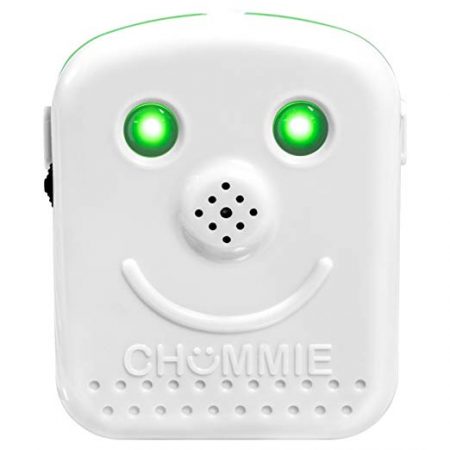Buying Guide — Shopping for the Best Bedwetting Alarms
The term ‘bedwetting’ — also known as sleep enuresis — refers to involuntary nighttime urination after the age of normal bladder control. Bedwetting is fairly common in young children and also affects many adults, but in some cases it can signal a more serious condition. There are many strategies for treating children and adults who wet the bed.
Bedwetting alarms are considered one of the most effective intervention methods due to their relatively high success rate. These alarms emit noises or vibrations whenever traces of moisture are detected, which wakes the sleeper and prompts them to visit the bathroom. A wide range of bedwetting alarms are available today; prices range from less than $50 to more than $250.
This guide will analyze the causes and effects of bedwetting, explore the common functions and characteristics of bedwetting alarms, provide some tips for first-time buyers, and list our picks for the best bedwetting alarms sold today.
Bedwetting Basics: Children and Adults
Enuresis is a type of parasomnia, which is a catch-all term for unusual or abnormal behaviors that occur during sleep. According to the Mayo Clinic, some of the most common causes of enuresis/bedwetting include:
- Undersized bladder: Some children and adults have smaller bladders that are incapable of holding as much urine during the night.
- Nerve signals: In some cases, children cannot recognize their bladder is full and urination is imminent because their nerves have not properly matured. This issue may be compounded in children who are sound sleepers.
- Hormonal imbalance: Our bodies produce an anti-diuretic hormone that reduces the production of urine during the night, but a hormonal imbalance may impact this process.
- Constipation: Because the same muscles control bladder and bowel release, children and adults who wet the bed are at higher-risk for chronic constipation as well.
- Systemic defects: Although rare, some children and adults wet the bed due to defects in their neurological or urinary systems.
- Urinary tract infection (UTI): A UTI may affect the lower or upper urinary tract. In either case, involuntary urination is a common symptom for children and adults with UTIs. These infections affect roughly 150 million people per year, and are more common in females.
- Sleep apnea: Sleep apnea is a disorder that causes temporary loss of breath during sleep. One form of this condition, obstructive sleep apnea (OSA), occurs when a physical obstruction hinders air circulation in the main breathing passages. Bedwetting can be a symptom of OSA in both children and adults; in most cases, snoring will also occur.
- Diabetes: Bedwetting in children is considered a warning sign of juvenile diabetes. Many children with diabetes also expel large amounts of urine at once. Diabetic adults are also at-risk for bedwetting.
- Kidney disease: Because the kidneys are attached to the ureters — the tubes that carry urine to the bladder — kidney disease can lead to bedwetting. This is more common for adults.
- Cancer: Certain types of cancer — namely prostate and bladder cancers — can lead to bedwetting in adults, as well as children in rare cases.
Additionally, the following warning signs for bedwetting have been identified:
- Anxiety: Certain events can trigger stress episodes in children — such as the start of a new school year or new additions to their family — which in turn can lead to bedwetting.
- Genetics: If both parents were bedwetters when they were younger, children are quite likely to wet the bed themselves. The risk is somewhat lower for children with one bedwetting parent.
- Attention-deficit/hyperactivity disorder (ADHD): ADHD is common among children — the CDC notes that 11% of children between the ages of four and 17 have been diagnosed — and many with this condition experience bedwetting.
- Old age: Many seniors experience incontinence throughout the day and night.
Most bedwetting cases for children do not warrant medical attention. However, the Mayo Clinic urges parents to take their child to a physician if the following occurs:
- Their child wets the bed after the age of seven.
- Their child wets the bed after a prolonged period of no bedwetting.
- The child also experiences painful urination, unusually colored urine, hard stool, snoring, or excessive thirst while urinating.
Because bedwetting is much less common in adults, they are urged to seek medical attention whenever these episodes occur. Treatment for adult bedwetting may include the following:
- Physical and neurological exam
- Urinalysis
- Kidney, bladder, and/or urological exam (including ultrasound tests)
What is a Bedwetting Alarm
Bedwetting alarms are designed to alert sleepers when urination is imminent. These devices are programmed to beep and/or vibrate whenever traces of moisture are detected, which awakens the sleeper to indicate they should go to the bathroom. While bedwetting alarms may not completely eliminate nighttime urination at first, they can effectively retrain the sleeper to wake up at critical times and have a favorable long-term success rate.
Bedwetting alarms generally come in three types:
- Wearable alarms
- Bell-and-pad alarms
- Wireless alarms
The table below contains detailed information about these three alarm types.


